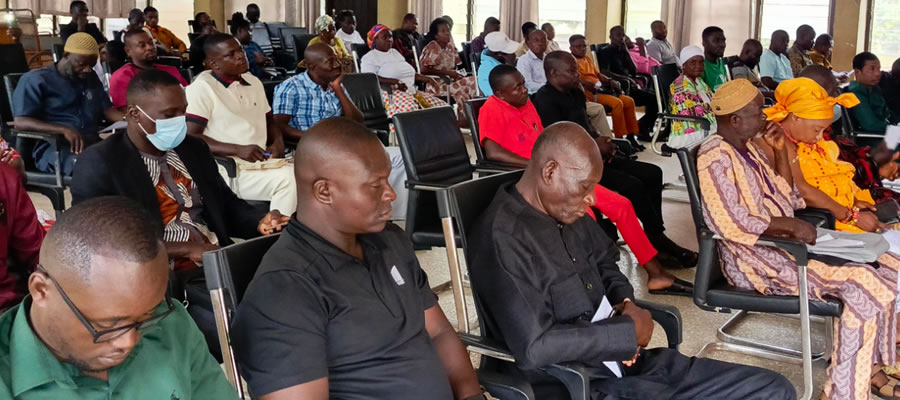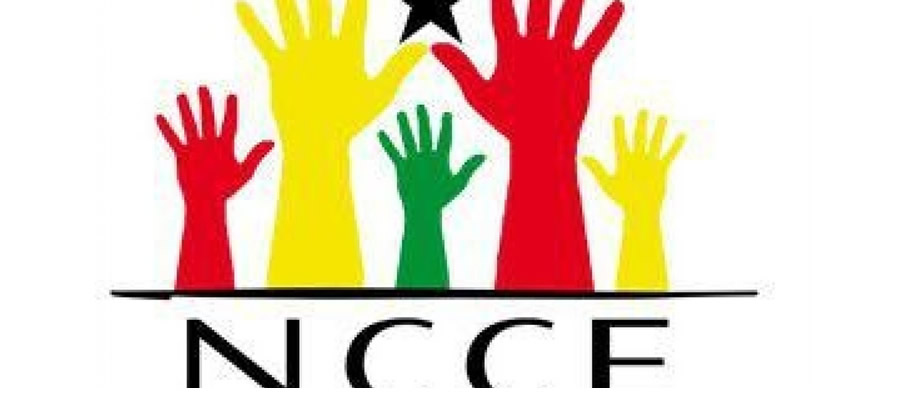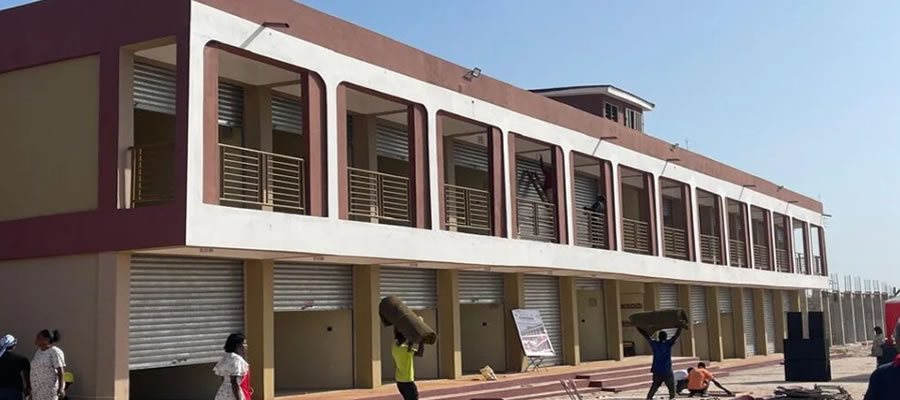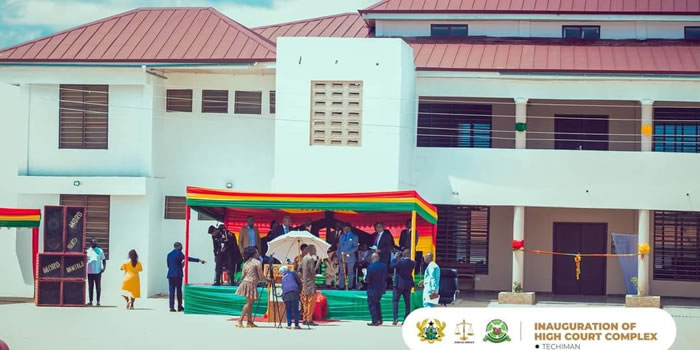

Population size
According to the 2000 Population and Housing Census, the population of the Municipality stood at 174,600, with an average growth rate of 3.0% per annum. The population density was over 260 persons/Km2, far higher than the regional figure of 45.9 and national figure of 79.3. The population of the Municipality has witnessed rapid increase from a modest 34,642 in 1960 to 174,600 in 2000 with intercensal growth rates far higher than the regional and national averages.
The population of the Municipality is estimated to be 202,409 by December, 2005. The resultant effect of this rapidly increasing population is that agricultural lands are being reduced and degraded. This is resulting in desertification and environmental degradation in the Municipality. Policies need to be put in place to protect Municipality’s lands, forest resources and other life supporting systems from the ravages of population pressure.
Age and Sex Structure
The Municipality age structure of the population depicts the general trend indicating a broad base that gradually taper off with increasing age due to death. This implies more job creation for the larger segment ages 15 – 64 years (55%) and an increase in social services like health, education and recreational facilities for the dependent age groups under 15 years and 65 and over constituting about 45%. Females dominate the population of the Municipality. The sex ratio, male to females is 99.9 in contrast to the regional ratio of 100.8. The structure also has implications for future population growth.
Dependency Ratio
From the 2000 PHC the dependent population of the Municipality is 78,284 with an economically active population (Age 15 – 64) of 96,316. The dependency ratio of 81.3 is therefore far below the regional average of 90.5. This low dependency could augur well for savings and capital accumulation.
Household Composition
The composition and structure of the households reflects the social structure of the society. The average household size is 5.1 as compared to the regional average of 5.3. About 34.2% of the households in the Municipality are female headed. The household structure indicates that Techiman has the highest percentage (41.3%) of children constituting household members. The household composition and structure indicate that the traditional family structure still exists in the Municipality. The dominance of male headed household also augurs well for the poverty situation of the household.
Population density
The growing population density, which stood at 265 in 2000, indicates great pressure of the population on land and other resources. Growth points such as Techiman, Kenten, Tuobodom continue to accommodate relatively higher population densities with corresponding pressure exerted on existing limited infrastructure facilities. This trend has led to the rise of urban slums with its attendant socio-economic problems. Table 1.1 illustrates the population trends from 1960 – 2000.
Rural-Urban Dimension
The Municipality is the second most urbanised in the region, 55.7% urban. Table 1.2 illustrate the population of the Municipality by type of locality and sex. Population distribution is uneven with the four most populous localities in the Municipality constituting over 48.7% of the total population of the Municipality with Techiman alone constituting about a third of the population.
The marked increase in urbanization since 1984 has been due partly to rapid growth in some urban centres like Techiman, while other per-I – urban towns have grown even more rapidly into new urban centres. For example Kenten, which is now the second largest urban town in the Municipality and the twentieth in the region with a population of 10599, was a small village with a population of 265 in 1970 growing to 828 in 1984. The growth may be largely due to population spill over from Techiman (56187), which is close to Kenten, as a result of real estate development and expansion in commercial activities.
The growing peri-urban phenomenon has its attendant development problems. Some of these settlements are faced with serious sanitation issues and land for communal infrastructure is almost unavailable now mainly because of the uncoordinated nature of land sales.
Population by Settlement
The Municipality contains about 510 settlements; most of the settlements are located along the main roads of the Municipality. Techiman, the capital, was the only urban settlement in 1960 and 1970 with populations of 8755 and 12068 respectively. By 1984, Tuobodom has also attained urban status with population of 6871.
The increase in the size of urban population may also be as a result of rural-urban migration due largely to unequal distribution of socio-economic resources.
Policy makers need to make conscious effort to address the issue of lopsided development planning activities to avoid over concentration of social amenities in few urban centres. Table 1.4 depicts the spatial distribution of population of selected settlements; in the Techiman municipality.
Migration
There is considerable movement of people into and out of the Municipality. This significant migrant population is attributable to the advantageous location of the Municipality and the bustling food crop market and commercial centre of Techiman. The famous Techiman market attracts a floating population of over three thousand, three days every week, into the Municipality. The immigrant proportion of labour force is also quite high, about 20%. This makes labour cost cheaper and promotes economic activities, especially farming. However, the outcome of this high migrant population is the over stretching of the Municipality’s limited resources, social services especially sanitation and housing are under pressure. They also have implication for security, health and environment.
Fertility and Children Survival
The total fertility rate (TFR) is 3.64 with mean children ever born (MCEB) average of 4.89. This is lower compared to the regional figure of TFR of 4.24 and MCEB of 5.02. The fertility levels tend to be lower for urban than rural areas of the Municipality. Rural women indicate higher fertility than their urban counterparts. This is also affected by their educational attainment.
Survival rate for children is at year 2000 was estimated at 82.44 comparable to the regional average of 82.34. This implies that less than 16 percent of the children born to women (12 – 49) years ever die. Child survival in the district is high. Reasons must be identified and the factors sustained, while at the same time intensifying fertility reducing programme activities in the Municipality to control the high population growth.
Functional Hierarchy of Settlements
The identification of settlements and facilities for constructing a functional matrix (scalogram) was carried out to determine the nature and spatial inequality/ equity in the distribution of economic and social facilities in the Municipality.
The distribution of services in the Municipality was analysed by employing the scalogram technique. The scalogram (also called Functional Matrix) is a planning tool used to show the sphere of influence (levels of centrality) of selected facilities or services in a municipality and the relative functionality of each settlement within that district/ municipality. In other words, the scalogram is a matrix presentation of the functional structure of settlements. The distribution of the services is presented in Table 1:5
In all, 35 settlements, with a population above 200 in the year 2004 were considered. A total number of 55 services were also considered in the scalogram. The hierarchy of settlements was derived from the centrality indices. In all, five (5) levels of hierarchy were derived. Techiman, the municipal capital with a population of 79,547 was found to be the only level one (1st) settlement, having 52 services.
This was followed by Tanoso as the level two (2nd) settlements with 25 services. Tuobodom, Aworowa and Offuman were found to be the only third (3rd) level settlements, with 3327 and 25 services respectively. On the other hand, settlement such as Krobo, up to Mesidan and others are the level four (4th) settlements, whilst Tadieso up to Asubingya are the level five (5th) settlements, with few services and a total centrality less than 100.
The important issue to discuss now is the distribution (that is the equality / inequality) of the services among the settlements. It could be realised that settlements with a population above 5000, have more services and, therefore, are playing an important role in the lives of their population. On the other hand, settlements a with population below 5000 have few services. This goes a long way to demonstrate that most services are provided based on the threshold population required for that particular facility eg. boreholes, hospitals, clinics, electricity, post offices, etc.
Therefore, the cause of the inequality or unequal distribution of services can be attributed to a great extent to the population of settlement. This inequality can also be attributed to the location advantage that some communities have over others. For example, Bamiri is located some few kilometres from Techiman town and because of this Bamiri, enjoys certain facilities which are enjoyed by Techiman.
In a similar vein, settlements, such as Agosa, Kuntunso, Atrensu, have populations above 200, but have few services, as compared to Bamiri, with population of 206, which has many services. The spatial inequality can basically be attributed to two (2) major factors, population and location of the settlement.
However, there is the need to adopt appropriate strategies to curb spatial inequality by providing development projects to towns, which qualify for urban development projects and services to enable them play key functions and thereby bridging the infrastructural gap. To achieve a balanced development, emphasis should be on the growth of second order and third order settlements, as rural centres, in order to provide services like, storage facilities, electricity, boreholes and markets, as well as labour intensive industries for the processing of local raw materials.
Spatial Distribution of Population
The spatial distribution of population reflects the man-land relationship, which is an important facet of a population policy. Population distribution patterns depict the proportion of population living in geographic units, as well as the degree of concentration in such units.
In the Municipality, the phenomenon of population distribution is influenced by various factors, including topography, availability of water sources, vegetation, soil conditions, type of economic activity, infrastructure and social amenities. The interplay of these factors, operating through demographic factors, has modified the population distribution of the Techiman Municipality.
The relatively high concentration of population in the Municipality is due to the more favourable influences of economic, infrastructural, political and administrative factors that have made it not only attractive to immigrants and in-migrants, but also helped to retain its population.
Generally, there is a high concentration of population in the south, where the number of settlements are higher. The high number of settlements, with a high population concentration at the south, can be explained by the relatively fertile soils there. This factor has led to in-migration, as many settlers from the south want to cultivate food and cash crops in this area. Techiman, Nsuta, Tanoso, Nkwaeso are some of the settlements here.
In the northern part of the Municipality, however, the towns are relatively fewer but large. Tuobodom, Buoyem, Offuman, Aworowa, Akrofrom are some of these towns. Generally, all the larger towns are along the main trunk roads of the Municipality.
Date Created : 11/21/2017 1:45:54 AM












 facebook
facebook
 twitter
twitter
 Youtube
Youtube
 +233 593 831 280
+233 593 831 280 0800 430 430
0800 430 430 GPS: GE-231-4383
GPS: GE-231-4383 info@ghanadistricts.com
info@ghanadistricts.com Box GP1044, Accra, Ghana
Box GP1044, Accra, Ghana